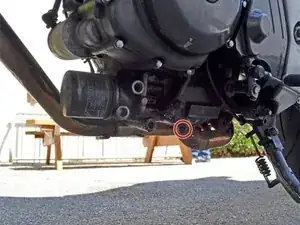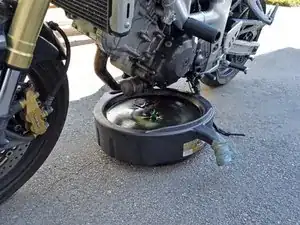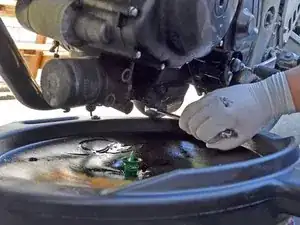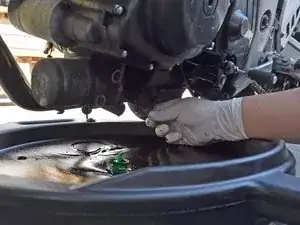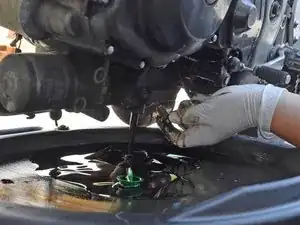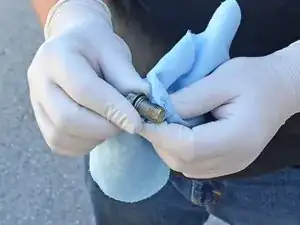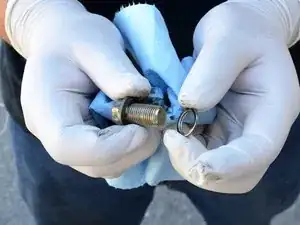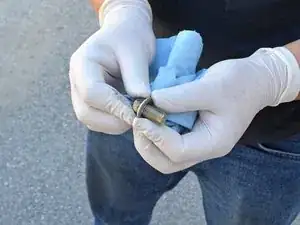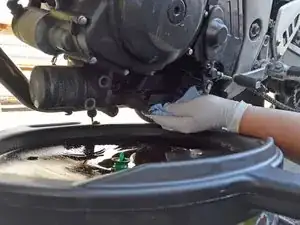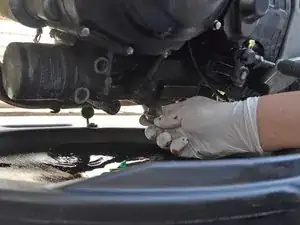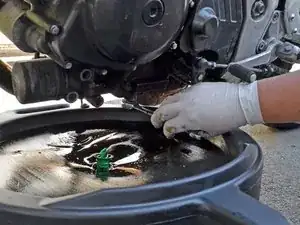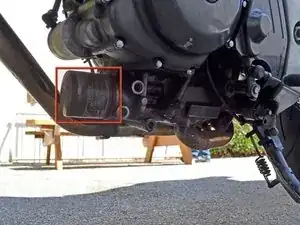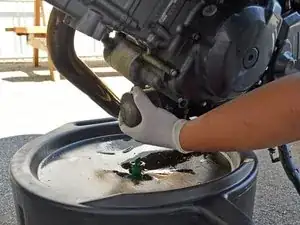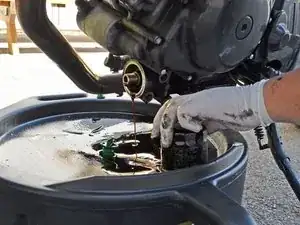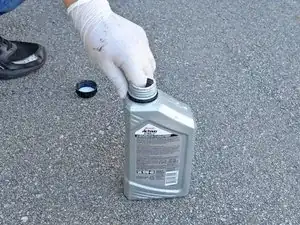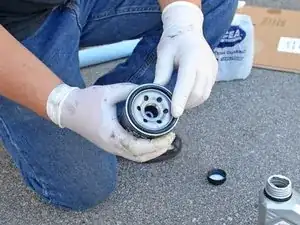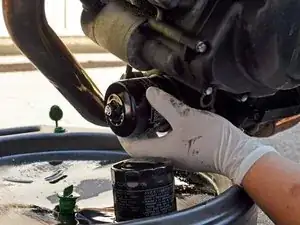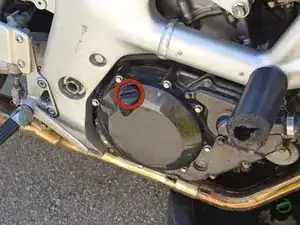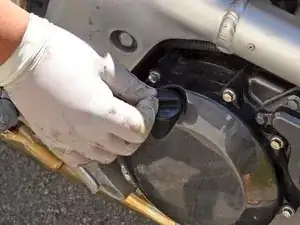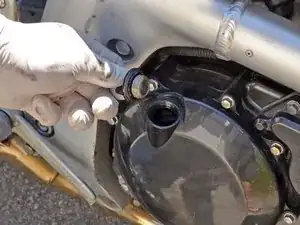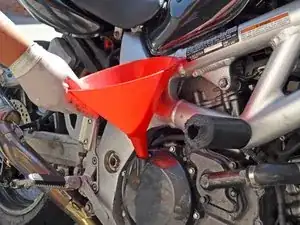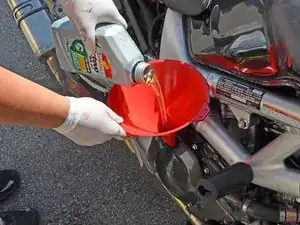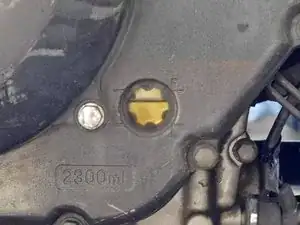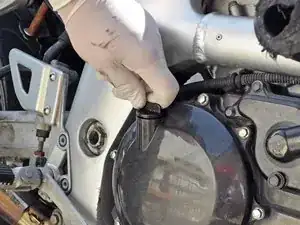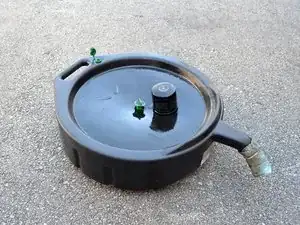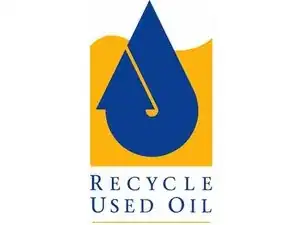Einleitung
Change the oil on your 1999-2002 Suzuki SV650 every 4,000 miles or six months to keep it running strong.
Werkzeuge
Ersatzteile
-
-
Locate the 14mm hex oil drain plug on the underside of the motorcycle.
-
Slide an oil drain pan underneath the oil drain plug.
-
-
-
Use a 14 mm box end wrench or socket to turn the oil drain plug counter-clockwise until you can turn it by hand.
-
Finish removing the oil drain plug by hand and allow the oil to drain.
-
-
-
Clean the oil drain plug with a towel or rag.
-
Remove the old gasket from the plug. If your drain plug gasket did not come off with the drain plug, pry it off the oil pan with a flat head screw driver.
-
Slide a new gasket over the threads.
-
-
-
Once the draining oil has slowed to a drip, wipe off the area around the oil drain and reinsert the oil drain plug.
-
Twist the oil drain plug into place using your hand, then finish tightening it clockwise with the box end wrench.
-
-
-
Locate the oil filter under the bike and slide the oil drain pan underneath it to catch draining oil.
-
Remove the oil filter by twisting it counter-clockwise.
-
Place the old oil filter down on the oil drain pan and allow oil to drain from the engine into the oil drain pan.
-
-
-
Dip a clean, gloved finger into a bottle of new oil.
-
Spread a thin layer of clean oil around the rubber gasket of the new oil filter.
-
Clean the area around the old oil filter with a rag or towel, then place the filter over the filter threads and use your hand to tighten it.
-
-
-
Locate the oil filler cap on top of the clutch cover.
-
Remove the oil drain cap by twisting it counter-clockwise.
-
-
-
Insert a funnel into the oil filler hole to prevent spills.
-
Pour 3 quarts of 10W-40 motorcycle oil into the engine. Use one hand to stabilize the funnel to prevent spills.
-
-
-
Tilt the motorcycle up off of its kickstand until it is vertical so that you can check the oil level through the sighting glass.
-
The oil level should read somewhere between the "Low" and "Full" marks.
-
After starting the motorcycle and rechecking the oil level, you may add or remove oil as you see fit, then place the oil filler cap back over the oil filler hole. Turn the cap clockwise until it is snug.
-
-
-
Start the bike and check it for leaks. If there are leaks, shut the bike off and determine if the drain plug or filter need to be tightened, or if a part has been damaged.
-
After running the engine for a few minutes, let it cool down for at least an hour and re-check the oil level. If the oil level completely fills the oil level view port you will need to drain some of the oil. If the oil level is below the bottom notch you will need to add oil.
-
Allow 12-24 hours for all the oil to drain out of your old oil filter.
-
Take your old oil and filter to a recycling facility. Most auto parts stores and repair shops accept these at no charge. In addition, some cities and/or counties have a service where they will collect used oil and filters from your home. For more information, see the American Petroleum Institute's web page on used motor oil collection and recycling.
-
4 Kommentare
In the first image that identifies the drain plug with a red circle is wrong. in one of the later images i see you remove another bolt than the one you circled. the question is what is that first bolt that you have circled? i ask because i drained whatever fluid it was holding back but it was definitely not all the oil in the engine. i have a compounded issue of a rounded drain plug so i can't drain all the oil out. sadly i have to get a replacement plug before extracting the stripped one. :-(
Just wanted to point out the issue of the plug ID in your image and maybe you know what that bolt actually is for.
Thank for doing this write up.
^^ hes right, you know.
amross10 -
Not the author, but I added the changes you guys saw. Good detective work!
Drake -

